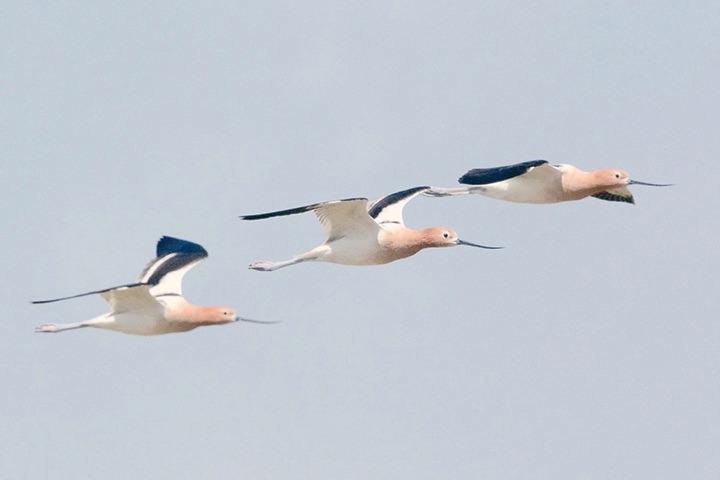The Texas tour I mentioned in my last article has now ended. Collectively, we saw 288 species of birds during this 18 day birding experience.
I’m pretty sure the Australians went home quite happy with the tour.
For most of the participants, virtually everything we saw was new to them.
If there was a downside to the trip, it was that the wave of migrants we had hoped for didn’t really materialize. These waves, that birders hope for, are dependent upon weather conditions. With a south wind, birds have no trouble crossing the Gulf of Mexico and generally just keep going when they reach land.
During our five days on the Gulf coast, the winds were continually from the south. This doesn’t mean we didn’t see birds, it just means we didn’t see an abundance of birds.
The woodland migrants include warblers, tanagers, vireos, buntings, hummingbirds, orioles and flycatchers. Flycatcher and hummingbirds were quite scarce, but we managed to get most of the rest, even if it was just one or two of each. The warblers were the most cooperative, during the trip we saw 26 different species from this colourful family.
Not all of the migrants are woodland birds. There is a beach on the Bolivar Peninsula that has been designated as a shorebird sanctuary. The day we visited was quite spectacular.
There was a huge flock of perhaps 2,500 American avocets all standing on the beach. The avocets were with at least 10 other shorebird species. In addition, there were five species of gulls, Brown and White Pelicans, and assorted egrets and herons. It was quite a spectacle that kept the participants occupied for two or three hours.
The last portion of our trip was to an area of Texas west of San Antonio known locally as hill country.
Being a little higher in elevation, and away from the coast, the bird life is different there. Two species in particular are much sought-after by birders.
The Golden-cheeked Warbler breeds nowhere else in the word other than hill country.
Similarly, the Black-capped Vireo is also restricted to that area, although its range does extend a little up into Oklahoma.
Clearly we had to make the effort to see these two birds.
On our first day in the area we visited Lost Maples State Park. I was confident that we would get the warbler; and we did as we walked along one of the gentle walking tracks.
But I was not so sure about the vireo. This bird lives in the scrubby habitat found up the slopes from the valley bottom. The climb is steep, but not all that long. We got to the top in about 30 minutes and then we began searching the shrubs and bushes for this secretive little bird.
It was a bit frustrating because it would pop into view briefly every few minutes. Each time it appeared, one or two participants would see it before it disappeared again. It took quite a while for everyone get a good look.
Our last evening was a little different. We went to visit the Frio River Bat Cave. An estimated 10 million Mexican Free-tailed Bats live in the cave.
Shortly before dark they begin to emerge from the cave entrance. The opening is not particularly large and only so many can come out at a time. It takes two or three hours for them all to get out, but in the process waves of bats can be seen spreading out over the surrounding countryside.
They look like ribbons of black snaking their way across the sky. Truly an amazing sight.
